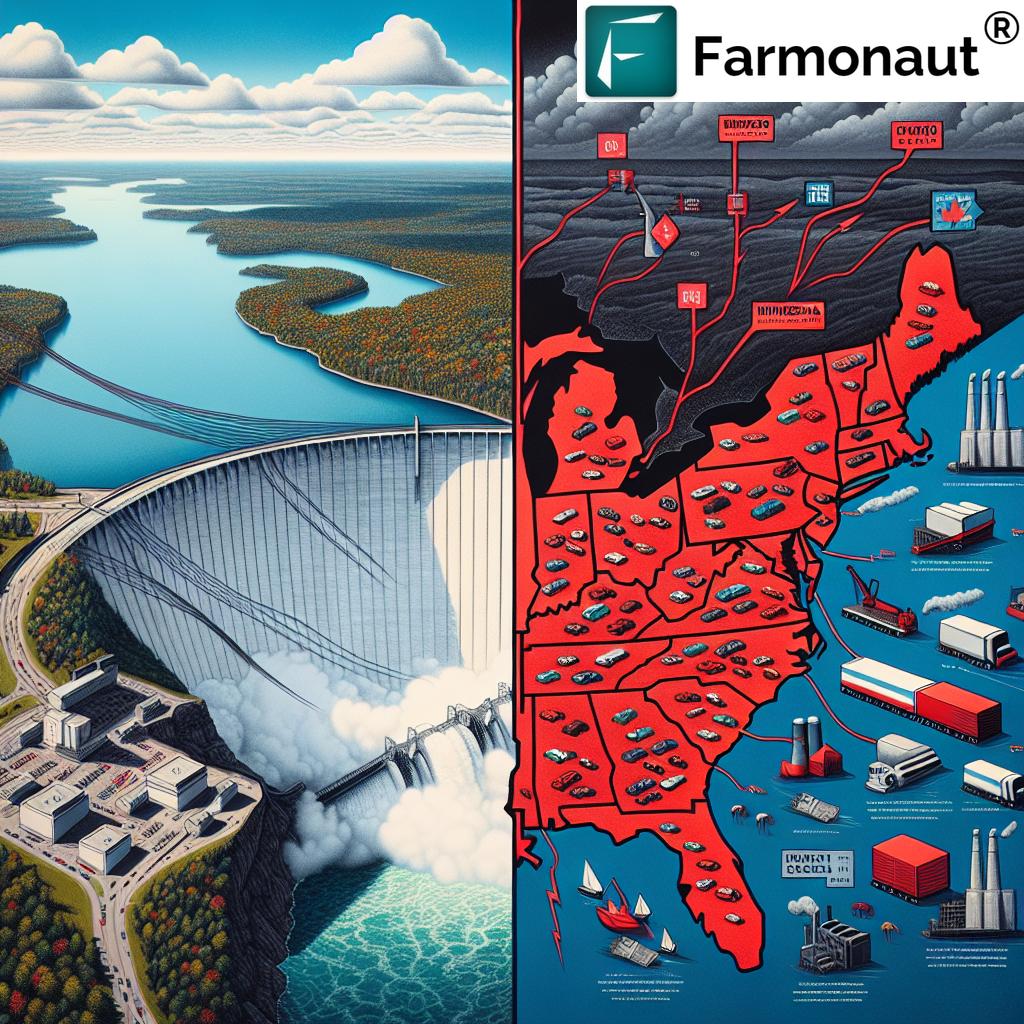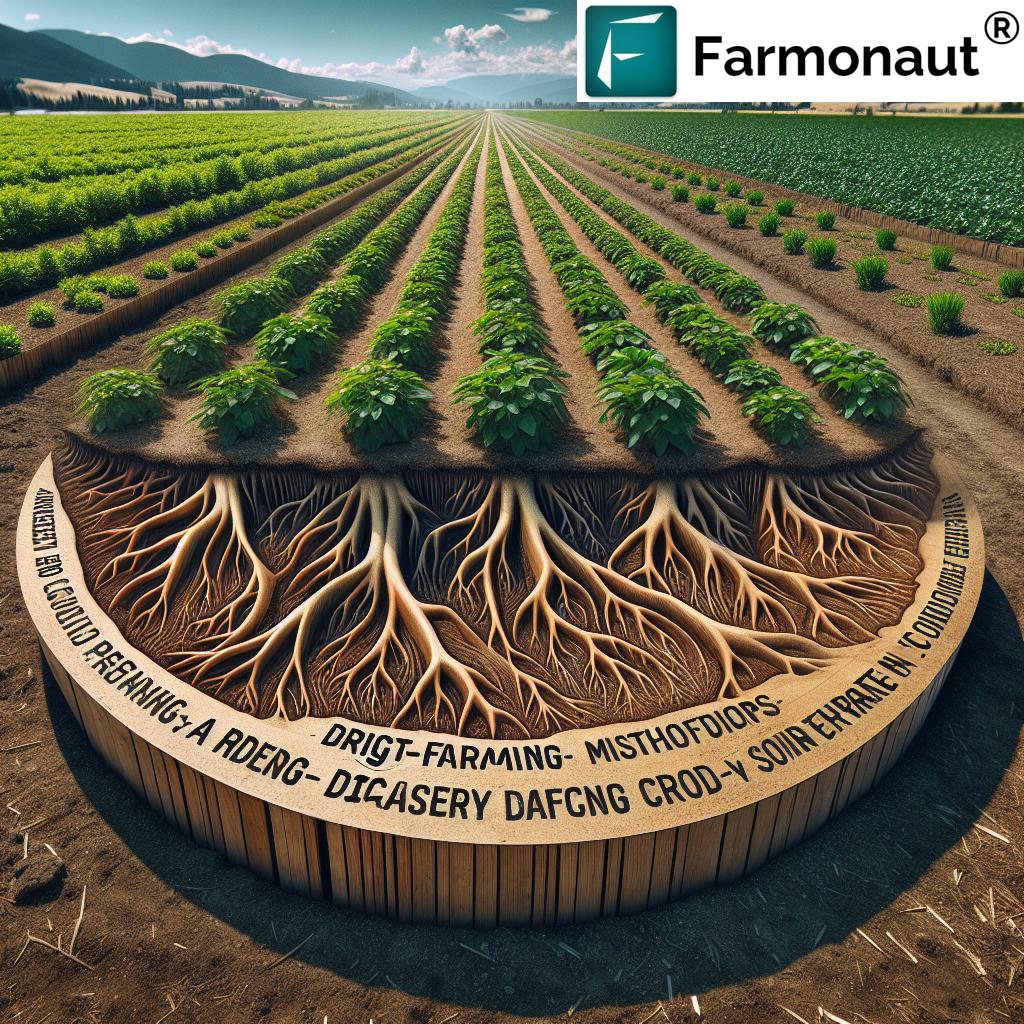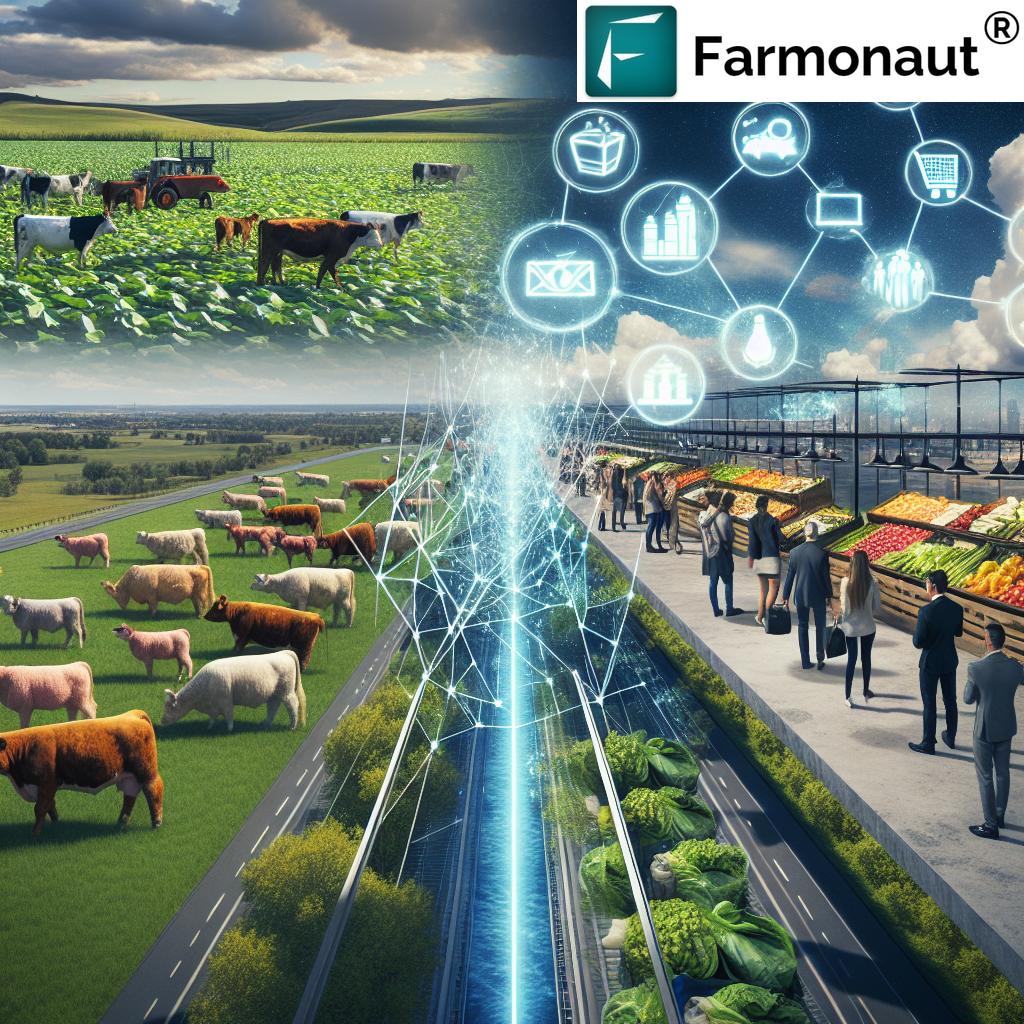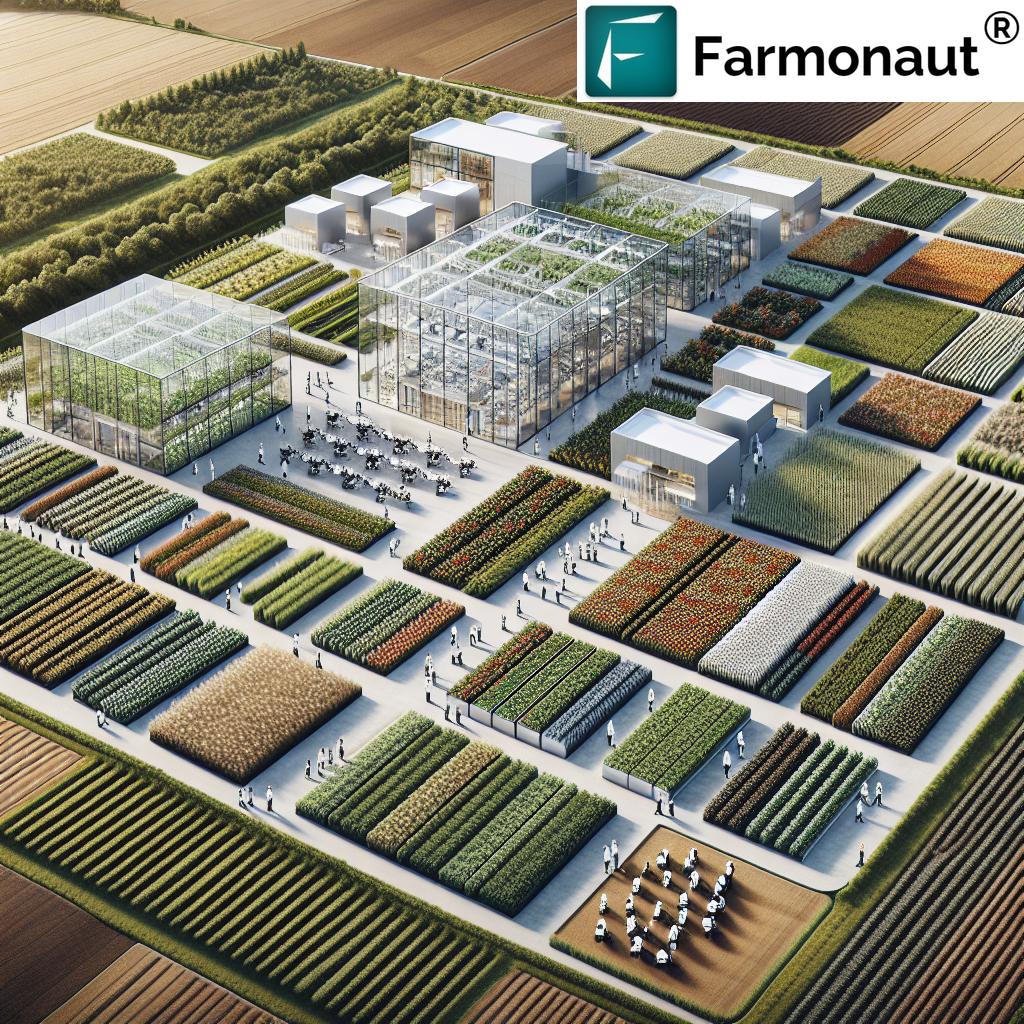Revolutionizing Canadian Prairie Farming: How Sustainable Agriculture Practices Boost Soil Health and Carbon Sequestration
“Canadian Prairie farms have increased soil organic carbon by up to 25% since the 1990s through sustainable agriculture practices.”
Welcome to our comprehensive exploration of how sustainable agriculture practices are transforming the Canadian Prairies, boosting soil health, and contributing to carbon sequestration. In this blog post, we’ll dive deep into the remarkable improvements in soil health across Canada’s agricultural landscape, with a particular focus on the Prairie region.
As we navigate through the intricacies of modern farming techniques, we’ll uncover how these practices are not only revolutionizing agriculture but also playing a crucial role in combating climate change. From the adoption of no-till techniques to the reduction in summer fallow and the rise of conservation tillage methods, we’ll examine how Canadian farmers are at the forefront of sustainable agriculture.

The Evolution of Prairie Farming
The Canadian Prairies, spanning across Alberta, Saskatchewan, and Manitoba, have long been the breadbasket of Canada. These vast expanses of fertile land have traditionally been home to extensive farming operations, producing crops such as wheat, canola, and pulses. However, over the past few decades, we’ve witnessed a significant shift in farming practices, driven by the need for sustainability and the increasing awareness of environmental impacts.
- Transition from conventional tillage to no-till and conservation tillage
- Reduction in summer fallow practices
- Adoption of crop rotation and diversification
- Implementation of precision agriculture techniques
These changes have not only improved soil health but have also contributed to significant carbon sequestration in agriculture. Let’s delve deeper into how these sustainable practices are making a difference.
No-Till Agriculture: A Game-Changer for Soil Health
“No-till farming adoption in Saskatchewan rose from 10% in 1991 to over 70% by 2011, significantly reducing soil erosion.”
No-till agriculture has emerged as one of the most impactful sustainable farming practices in the Canadian Prairies. This technique involves planting crops without disturbing the soil through tillage. The benefits of no-till agriculture are numerous:
- Improved soil structure and water retention
- Reduced soil erosion
- Enhanced soil organic matter content
- Increased carbon sequestration potential
By minimizing soil disturbance, no-till farming allows organic matter to accumulate, creating a healthier ecosystem for soil microorganisms. This, in turn, leads to improved nutrient cycling and better overall soil health.
The adoption of no-till practices has been particularly impressive in Saskatchewan, where it has played a crucial role in combating soil erosion and improving soil health. This shift has not only benefited farmers through improved yields and reduced input costs but has also contributed significantly to carbon sequestration efforts.
Reduction in Summer Fallow: Maximizing Land Use Efficiency
Another significant change in Prairie farming has been the dramatic reduction in summer fallow practices. Summer fallow, once a common technique to conserve moisture and control weeds, has been largely phased out due to its negative impacts on soil health and carbon storage.
The benefits of reducing summer fallow include:
- Increased soil organic carbon levels
- Improved water use efficiency
- Enhanced soil microbial activity
- Reduced risk of soil erosion
By keeping the land under continuous crop production, farmers are not only maximizing their land use efficiency but also contributing to improved soil health and increased carbon sequestration.
Conservation Tillage: Finding the Middle Ground
While no-till farming has gained significant traction, conservation tillage methods have also played a crucial role in improving soil health across the Prairies. Conservation tillage involves minimal soil disturbance while retaining crop residues on the soil surface.
Key benefits of conservation tillage include:
- Reduced soil erosion compared to conventional tillage
- Improved soil moisture retention
- Enhanced soil organic matter content
- Increased carbon sequestration potential
Conservation tillage provides a middle ground for farmers transitioning from conventional practices to no-till systems, offering many of the benefits of no-till while allowing for some soil management flexibility.
Soil Organic Carbon Gains: The Prairie Success Story
The adoption of these sustainable agriculture practices has led to remarkable improvements in soil organic carbon levels across the Canadian Prairies. Recent data from Alberta and Saskatchewan show significant gains in soil carbon storage over the past few decades.
Key findings include:
- Increases in soil organic carbon of up to 25% since the 1990s
- Higher carbon sequestration rates in no-till systems compared to conventional tillage
- Improved soil structure and water-holding capacity
- Enhanced resilience to climate variability
These gains in soil organic carbon not only contribute to climate change mitigation but also improve overall soil health and agricultural productivity.
Challenges in Central Canada: A Different Story
While the Prairie provinces have seen remarkable success in improving soil health and carbon sequestration, the situation in Central Canada presents a different set of challenges. Regions in Ontario and Quebec have faced obstacles in adopting similar practices due to factors such as:
- Different soil types and climatic conditions
- Diverse crop rotations and farming systems
- Historical land use patterns
- Economic and policy considerations
Addressing these challenges requires tailored approaches that consider the unique agricultural landscape of Central Canada.

Agricultural Emissions Reduction: A Positive Side Effect
The adoption of sustainable agriculture practices in the Prairies has not only improved soil health but has also contributed to agricultural emissions reduction. By enhancing soil carbon storage and reducing the need for intensive tillage, these practices help mitigate greenhouse gas emissions from agriculture.
Key emissions reductions include:
- Decreased carbon dioxide emissions from reduced soil disturbance
- Lower nitrous oxide emissions through improved nitrogen management
- Reduced methane emissions from improved livestock management practices
These reductions play a crucial role in Canada’s efforts to meet its climate change commitments and demonstrate the potential for agriculture to be part of the solution to global environmental challenges.
Soil Erosion Prevention: Protecting the Prairie Landscape
One of the most significant benefits of sustainable agriculture practices in the Prairies has been the dramatic reduction in soil erosion. Techniques such as no-till farming and conservation tillage have helped protect the soil from wind and water erosion, preserving this valuable resource for future generations.
Benefits of soil erosion prevention include:
- Preservation of topsoil and organic matter
- Improved water quality in nearby streams and rivers
- Enhanced long-term agricultural productivity
- Reduced need for fertilizer inputs
By keeping soil in place, these practices not only benefit farmers but also contribute to the overall health of the Prairie ecosystem.
The Soil Carbon Change Index: Measuring Progress
To track the improvements in soil health across the Canadian Prairies, researchers have developed the Soil Carbon Change Index. This index provides valuable insights into the trends in soil organic carbon levels over time.
Key findings from the Soil Carbon Change Index include:
- Positive trends in soil organic carbon levels since the 1990s
- Variations in carbon sequestration rates across different regions
- Correlation between sustainable practices adoption and carbon gains
- Identification of areas for further improvement
This index serves as a crucial tool for policymakers, researchers, and farmers in assessing the impact of sustainable agriculture practices and guiding future initiatives.
Emerging Concerns: Potential Setbacks in Soil Health Management
While the overall trend in Prairie soil health has been positive, there are emerging concerns that could potentially lead to setbacks in soil health management. These include:
- Intensification of crop production in some areas
- Changes in crop rotations driven by market demands
- Potential impacts of climate change on soil health
- Challenges in maintaining organic matter levels in high-yielding systems
Addressing these concerns requires ongoing research, adaptive management strategies, and continued commitment to sustainable agriculture practices.
The Role of Technology in Sustainable Prairie Farming
Advancements in agricultural technology have played a crucial role in supporting the adoption of sustainable farming practices in the Canadian Prairies. Tools and technologies such as precision agriculture, remote sensing, and data analytics have empowered farmers to make more informed decisions about their land management practices.
Farmonaut, a leading agricultural technology company, offers advanced satellite-based farm management solutions that align perfectly with the goals of sustainable Prairie farming. Through its web application, Android app, and iOS app, Farmonaut provides farmers with valuable insights into crop health, soil moisture levels, and other critical metrics.
Key features of Farmonaut’s technology include:
- Real-time crop health monitoring using satellite imagery
- AI-driven advisory systems for optimized farm management
- Weather forecasting and climate risk assessment tools
- Resource management solutions for improved efficiency
By leveraging these technologies, Prairie farmers can make data-driven decisions that support both productivity and sustainability goals.
The Future of Sustainable Prairie Farming
As we look to the future of agriculture in the Canadian Prairies, it’s clear that sustainable farming practices will continue to play a crucial role. The gains in soil health and carbon sequestration achieved over the past few decades provide a strong foundation for further improvements.
Key areas of focus for the future include:
- Continued research into soil health management strategies
- Development of climate-resilient crop varieties
- Integration of advanced technologies for precision agriculture
- Policy support for sustainable farming initiatives
- Education and training for farmers on best practices
By building on the successes of the past and addressing emerging challenges, we can ensure that Prairie farming remains at the forefront of sustainable agriculture globally.
Comparative Analysis of Sustainable Agriculture Practices in Canadian Prairies
| Sustainable Practice | Soil Health Impact | Carbon Sequestration Potential (Estimated tons CO2/hectare/year) | Adoption Rate in Prairie Provinces (Estimated percentage) |
|---|---|---|---|
| No-till farming | Improved soil structure, increased organic matter | 0.5 – 1.0 | 70% |
| Conservation tillage | Enhanced soil moisture retention, reduced erosion | 0.3 – 0.7 | 20% |
| Reduced summer fallow | Increased soil microbial activity, improved nutrient cycling | 0.2 – 0.5 | 85% |
| Cover cropping | Enhanced soil biodiversity, improved soil structure | 0.3 – 0.8 | 30% |
Conclusion: A Sustainable Future for Canadian Prairie Farming
The transformation of Canadian Prairie farming through sustainable agriculture practices represents a remarkable success story in environmental stewardship and agricultural innovation. By adopting techniques such as no-till farming, reducing summer fallow, and implementing conservation tillage methods, Prairie farmers have not only improved soil health but have also made significant contributions to carbon sequestration and emissions reduction.
The gains in soil organic carbon, coupled with reduced soil erosion and improved water management, demonstrate the potential for agriculture to be a key player in addressing global environmental challenges. As we continue to face the impacts of climate change and the need for increased food production, the lessons learned from the Canadian Prairies offer valuable insights for farmers and policymakers worldwide.
At Farmonaut, we’re committed to supporting this sustainable agricultural revolution through our advanced satellite-based farm management solutions. By providing farmers with the tools and insights they need to make informed decisions, we’re helping to drive the continued evolution of sustainable farming practices.
As we look to the future, it’s clear that the path forward lies in continued innovation, research, and collaboration. By building on the successes of the past and addressing emerging challenges, we can ensure that Canadian Prairie farming remains at the forefront of sustainable agriculture, setting an example for the world to follow.
FAQ Section
Q: What are the main sustainable agriculture practices adopted in the Canadian Prairies?
A: The main sustainable practices include no-till farming, conservation tillage, reduced summer fallow, and crop diversification.
Q: How have these practices impacted soil organic carbon levels?
A: Soil organic carbon levels have increased by up to 25% since the 1990s in many Prairie regions due to these sustainable practices.
Q: What role does technology play in sustainable Prairie farming?
A: Technology, such as Farmonaut’s satellite-based solutions, plays a crucial role in providing real-time data on crop health, soil moisture, and other key metrics, enabling farmers to make informed decisions.
Q: How do sustainable farming practices contribute to carbon sequestration?
A: Practices like no-till farming and reduced summer fallow help increase soil organic matter, which effectively sequesters carbon from the atmosphere into the soil.
Q: What challenges do farmers face in adopting sustainable practices?
A: Challenges include initial costs of transitioning, learning new techniques, and adapting to changing weather patterns and market demands.
For more information on how Farmonaut can support your sustainable farming journey, visit our API Developer Docs or explore our API offerings.
















